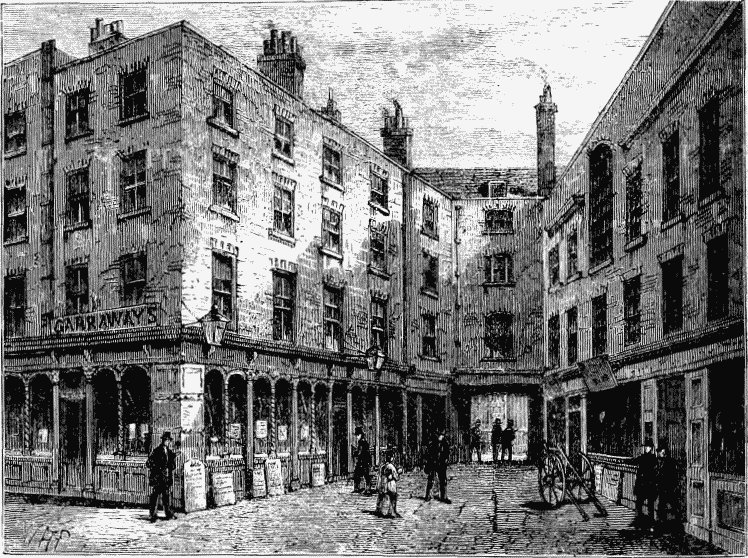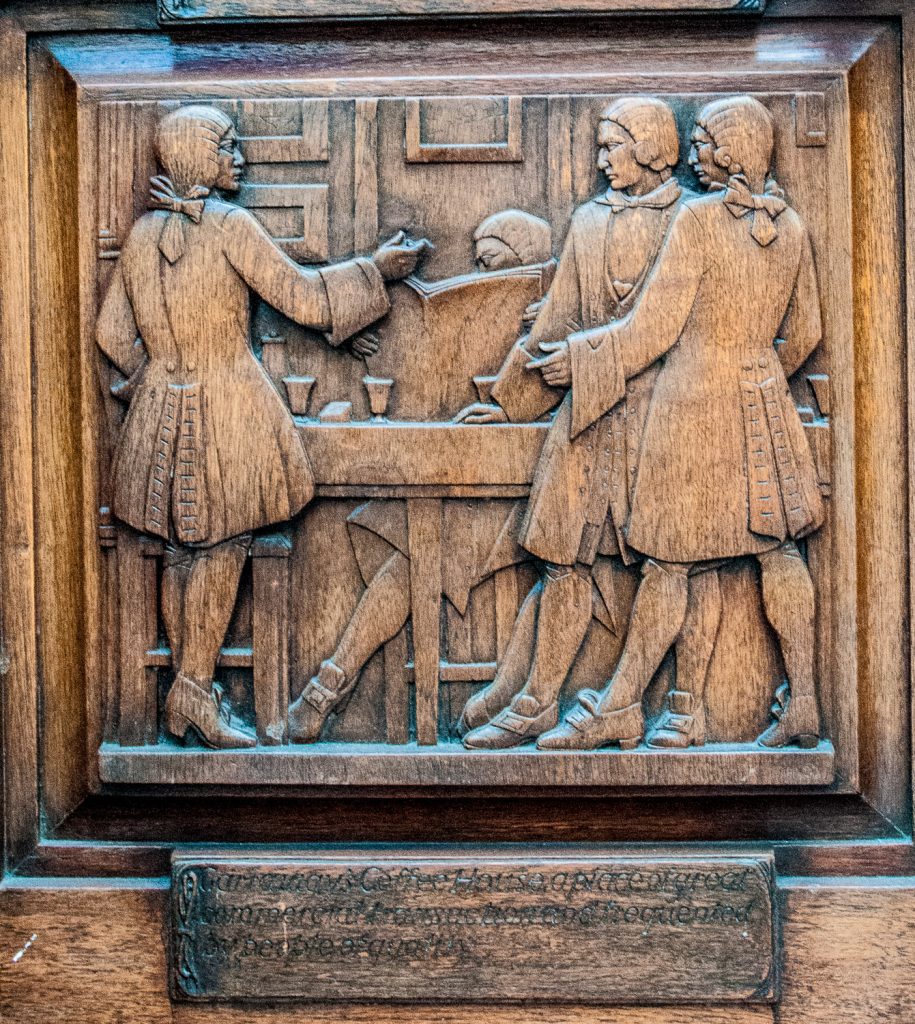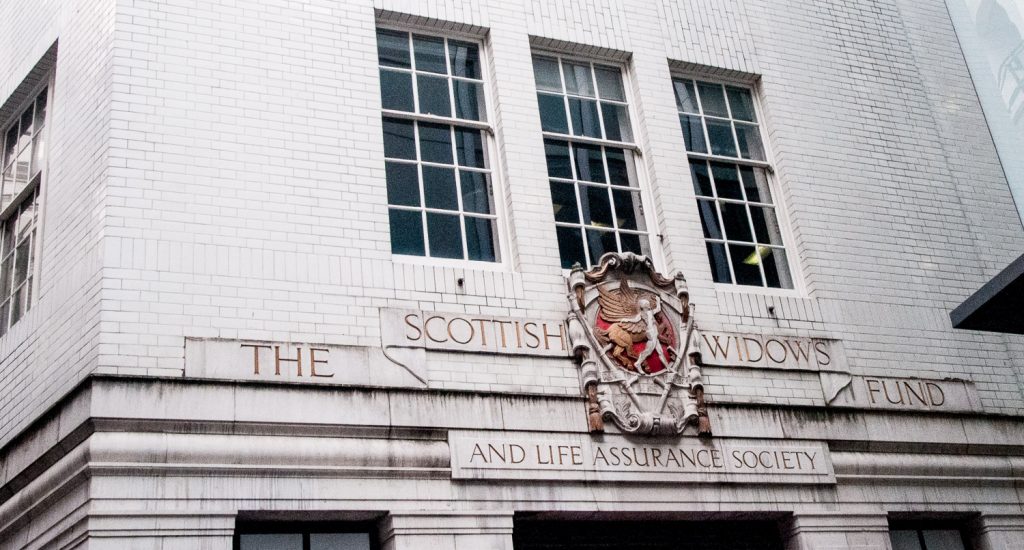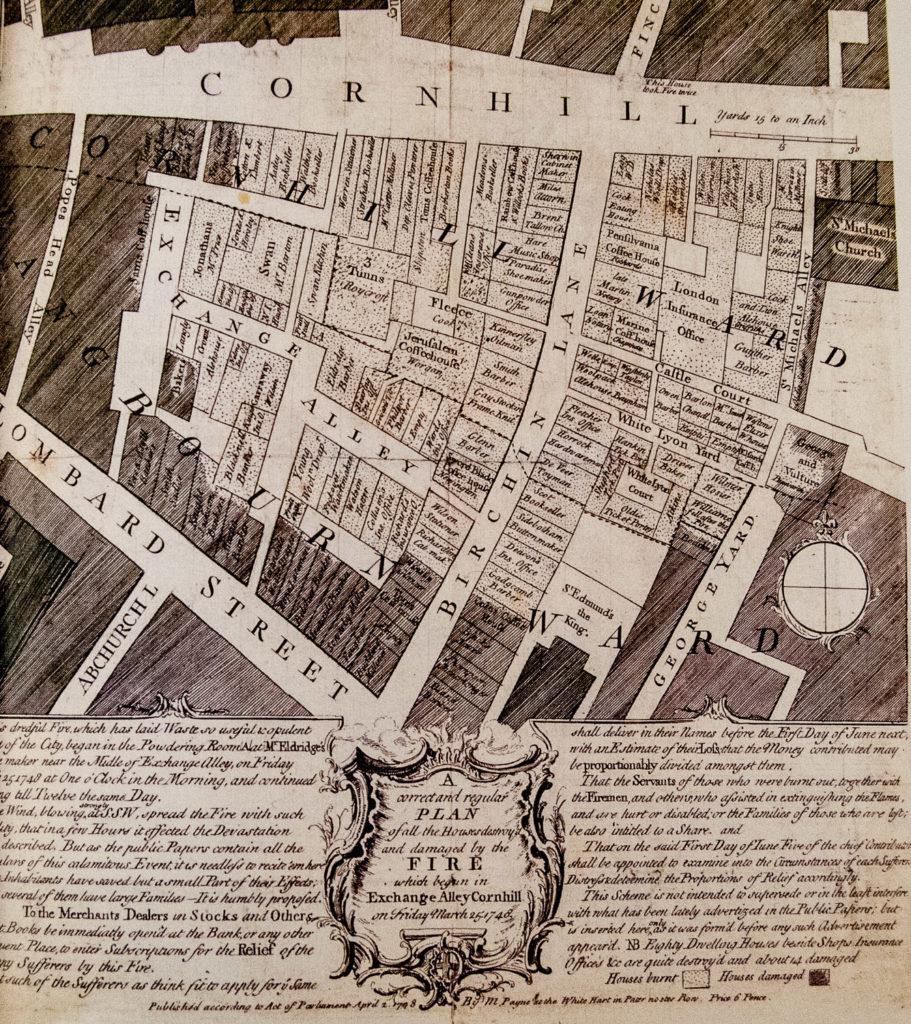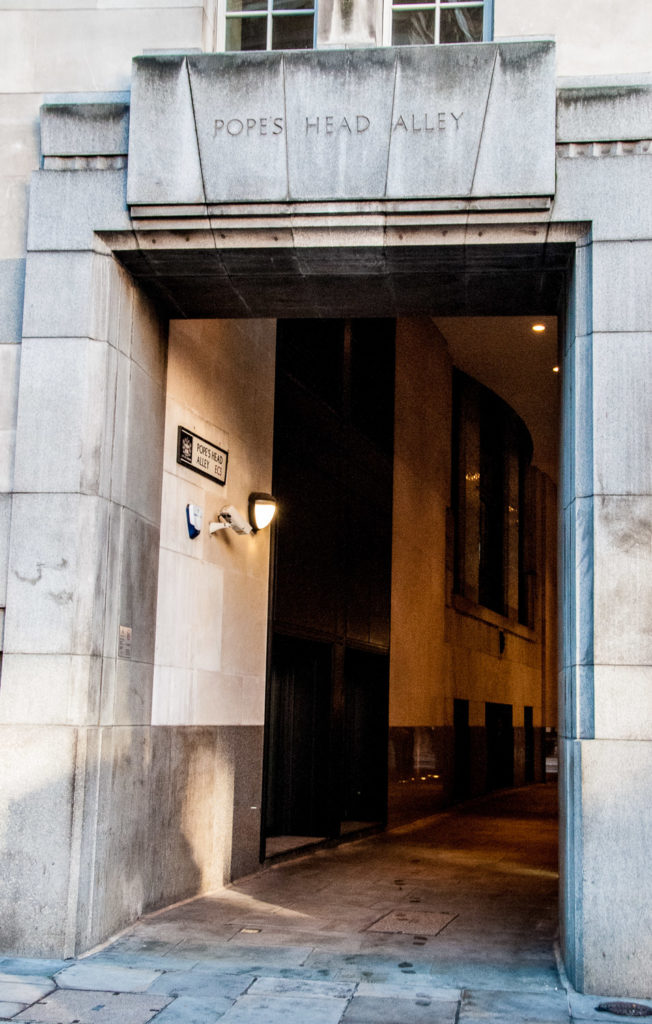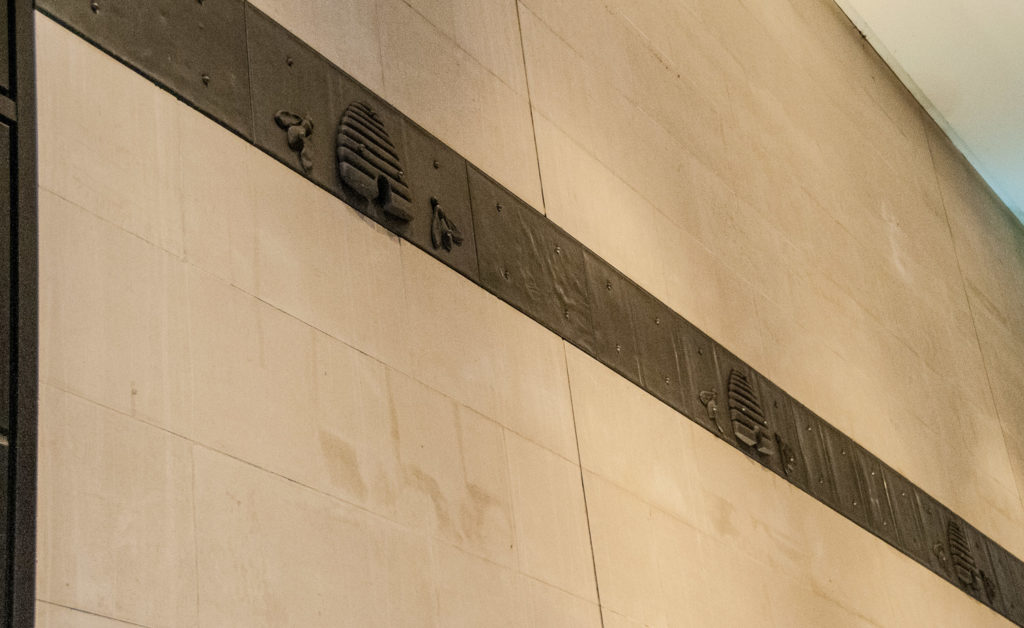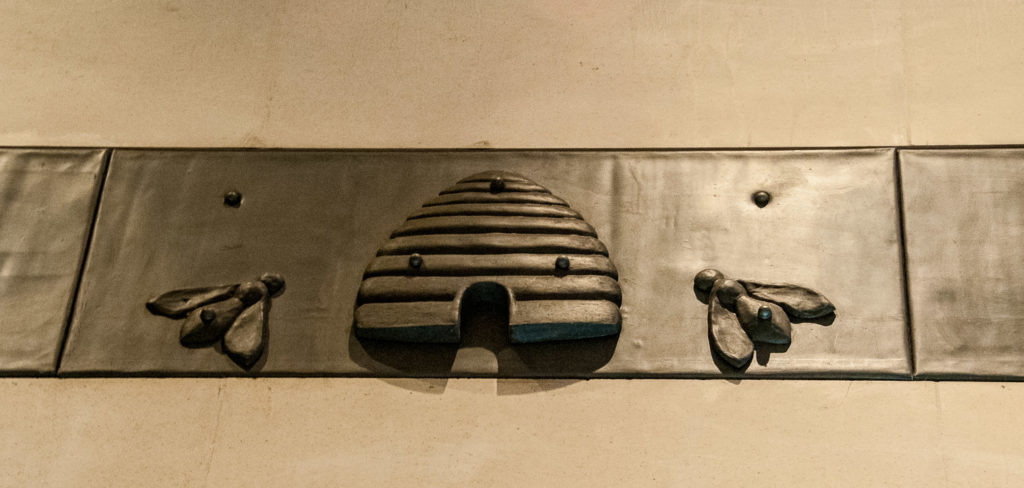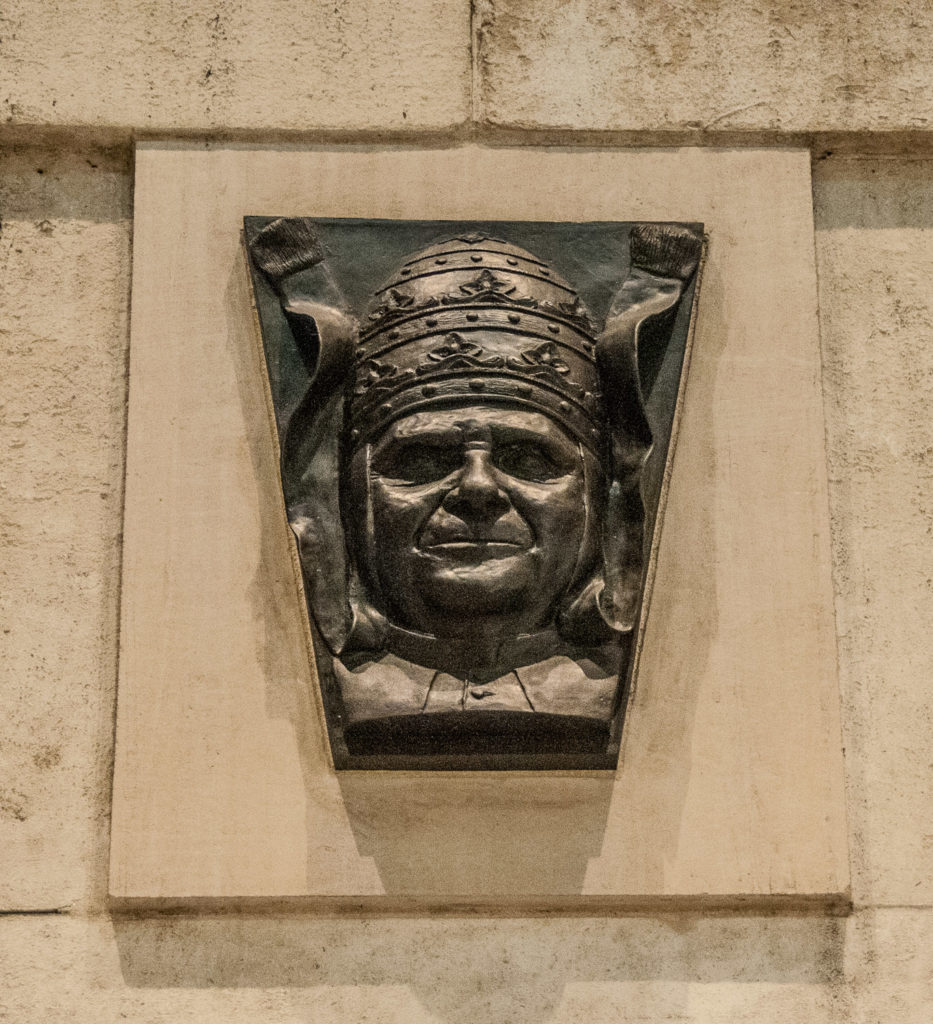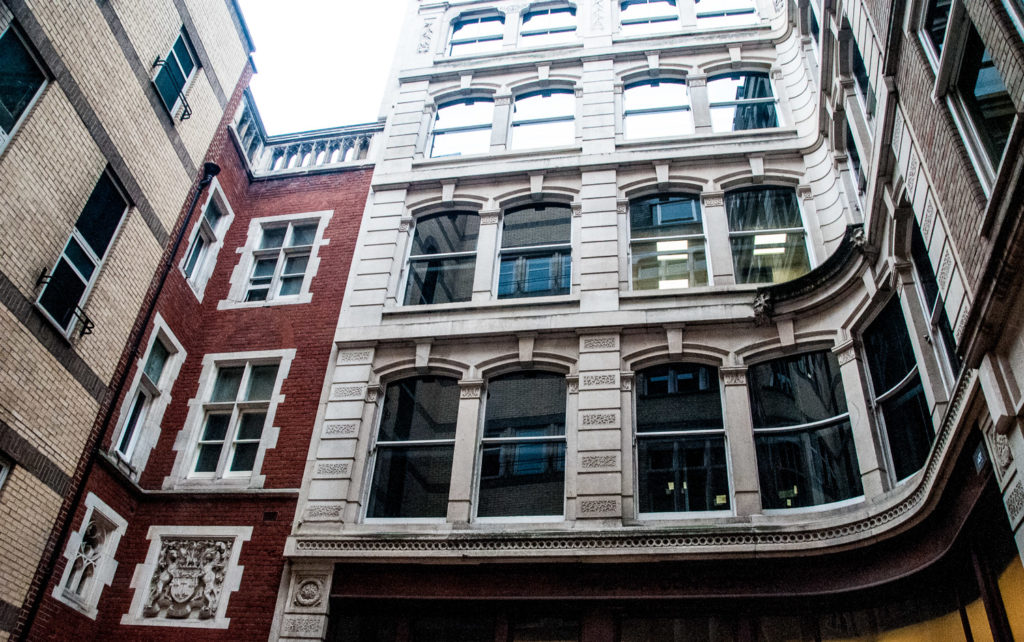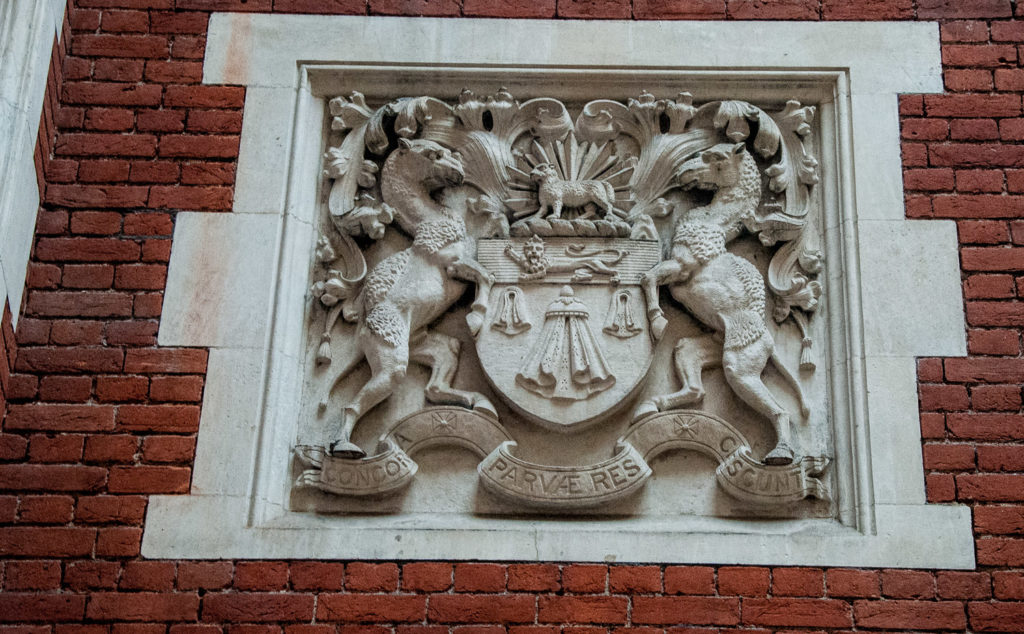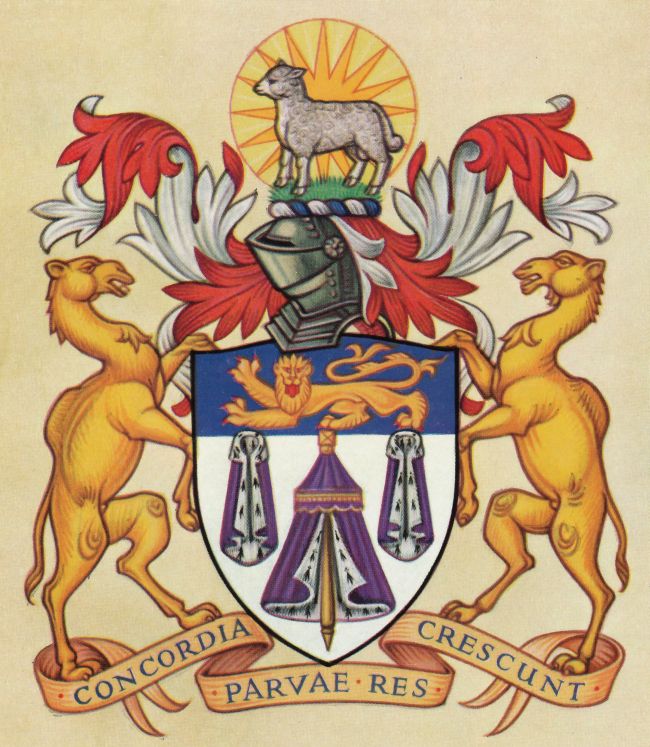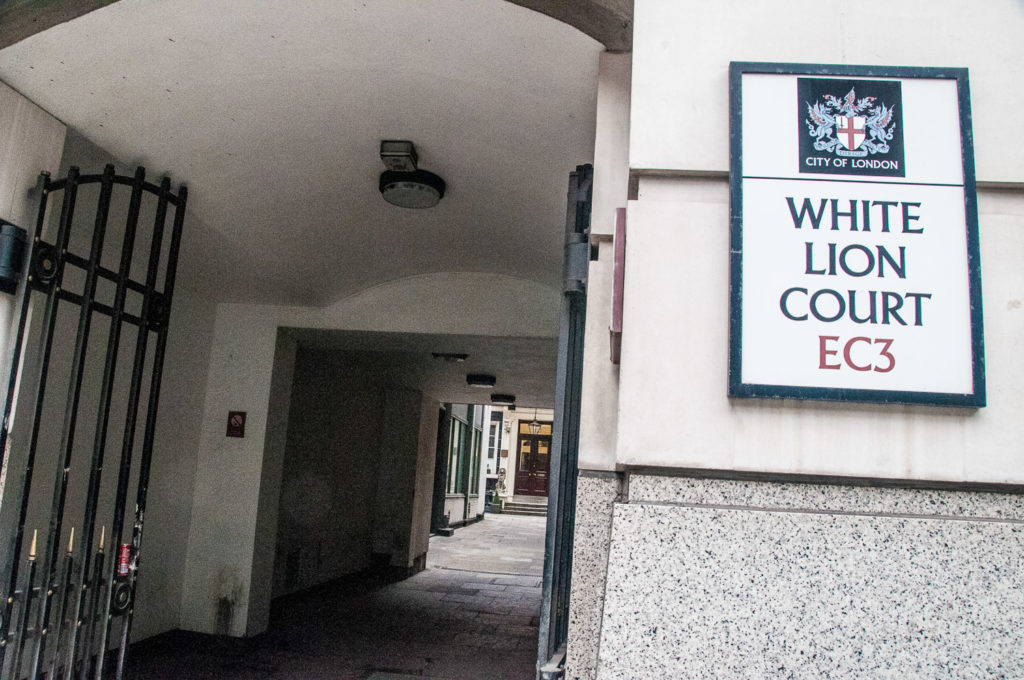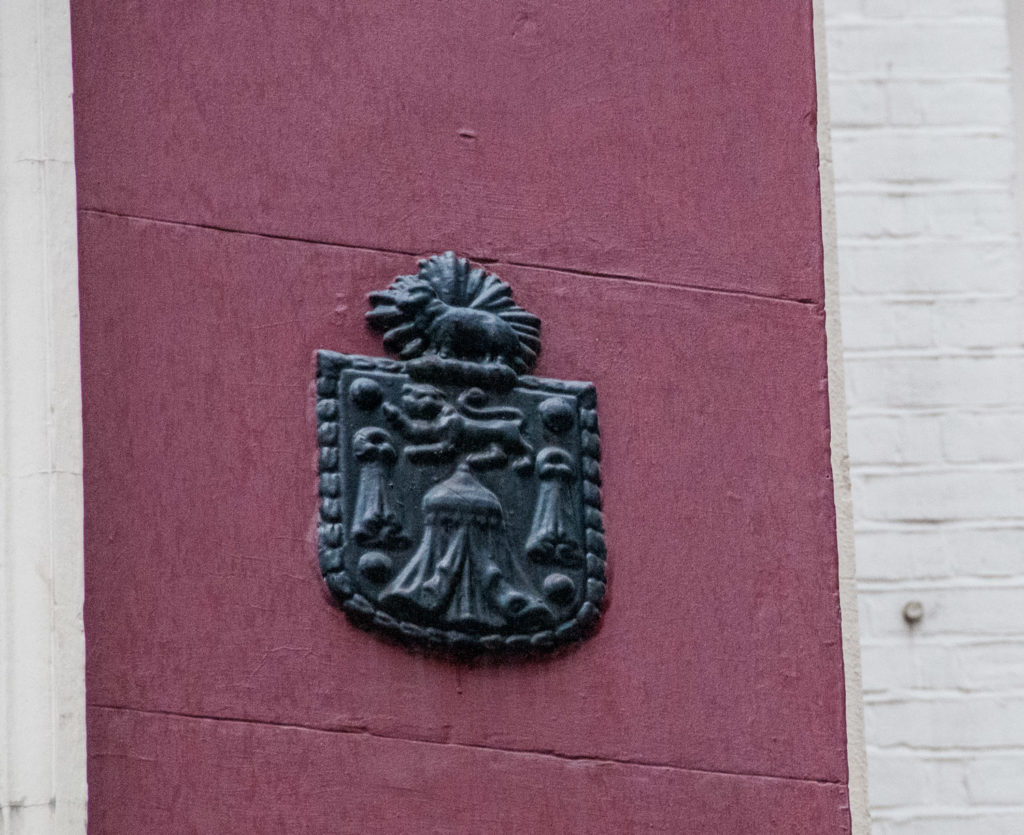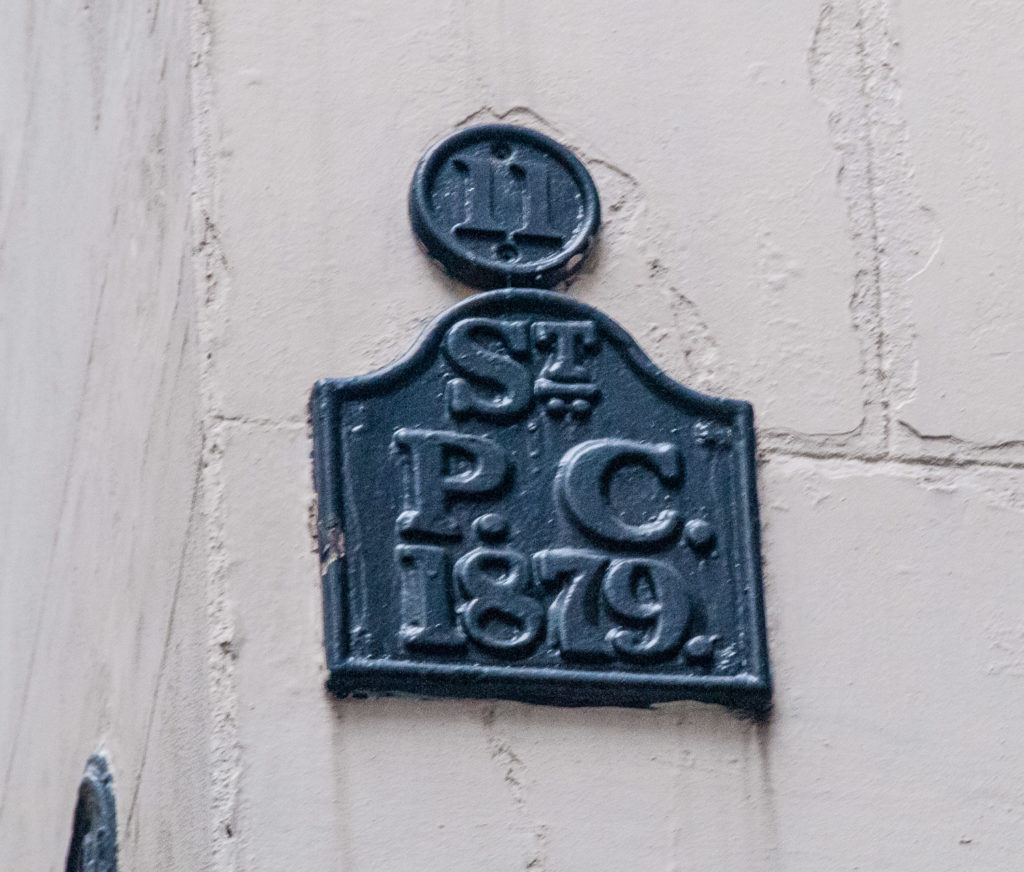I have been back prowling around the alleys and courtyards just off Cornhill and again experiencing the atmosphere and surprises to be found here. Take, for example, Corbet Court (EC4V 0AT). The entrance doesn’t look very promising …

But once you have entered look around and you will come face to face with this lovely serene lady who has gazed out at London and Londoners since 1669 …
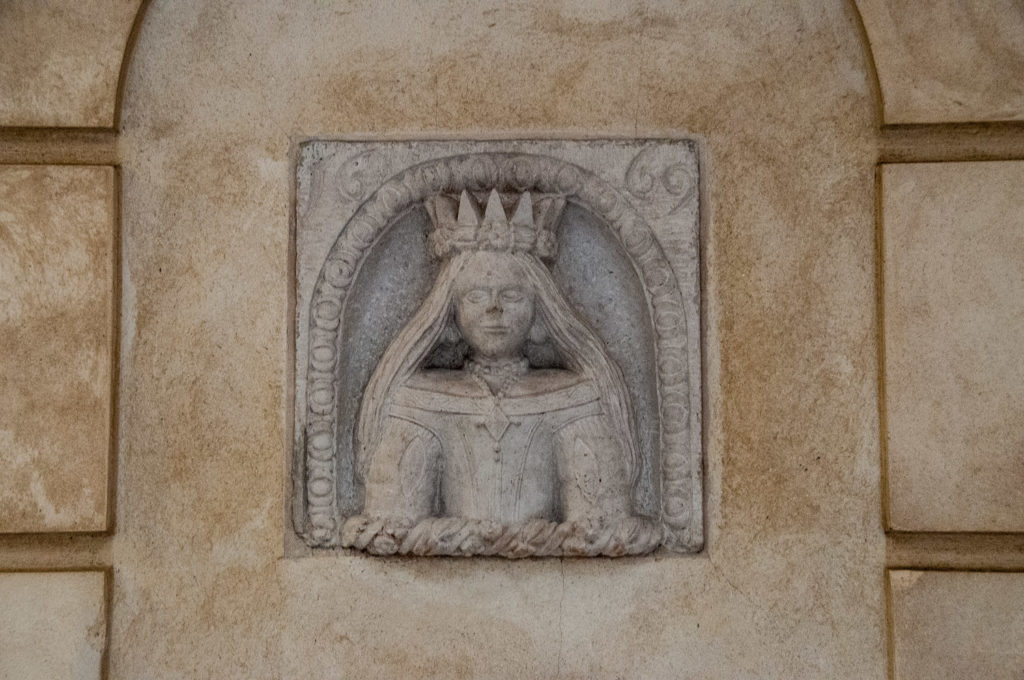
Regular readers will recognise her as a Mercer Maiden, the symbol and coat of arms of the Mercer Company. She first appeared on a seal in 1425 but her precise origins are unknown, and there is no written evidence as to why she was chosen as the Company’s emblem. She can be found all over London marking Mercer property and I have written about her in an earlier blog which can be found here.
Nearby is St Peter’s Alley (EC3V 3PD) with its atmospheric entrance on Cornhill …

Here stands the church of St Peter’s, Cornhill which is now used as a Christian Aid study centre and is currently not open to the public. The Saint stands atop the entrance gate holding the keys to the Kingdom of Heaven …

The church tower with some of its more recent neighbours such as the Cheesegrater …

A few memorial stones are beginning to wear away …
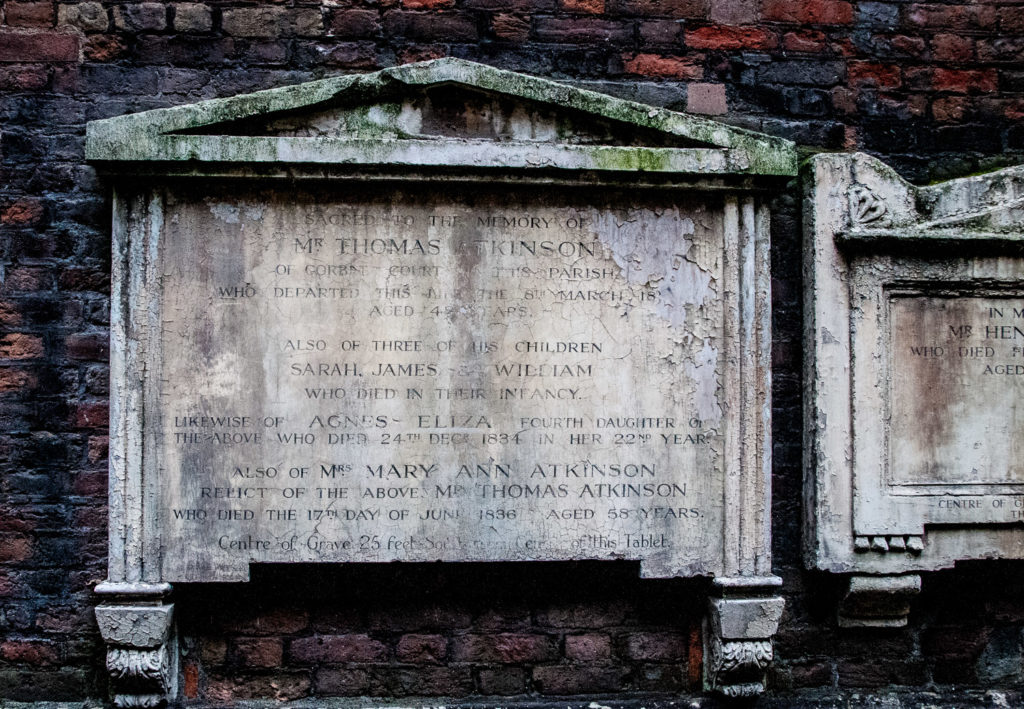
The churchyard was in use as the main place of burial for the parish until 1850 and following closure it was laid out as a garden for public use that you see now.
If you retrace your footsteps to Corbet Court, you can then walk down St Michael’s Alley (EC4V 9DS) which winds its way to back to Cornhill …

Your eye is immediately drawn to the gigantic lamp advertising the Jamaica Wine House, a Victorian stone fronted building which now stands on the site of the City’s first coffee house …

A plaque commemorates the coffee house and I wrote about this last week …

Pasqua Rosée (Easter Rose) the proprietor was the servant of a Levant merchant named Daniel Edwards, a trader in Turkish goods, who imported the coffee and assisted Rosée in setting up the establishment.
Look out for the entrance to Castle Court …
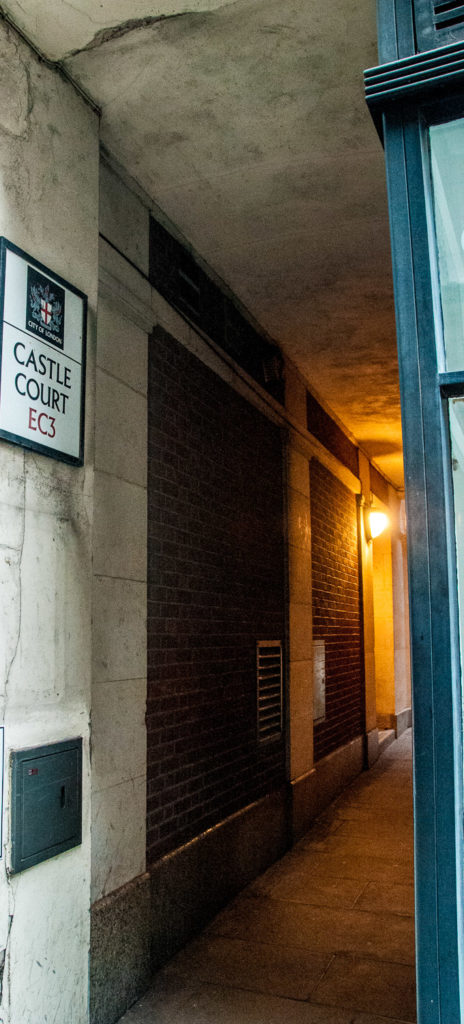
You’ll see the back of the George & Vulture … …
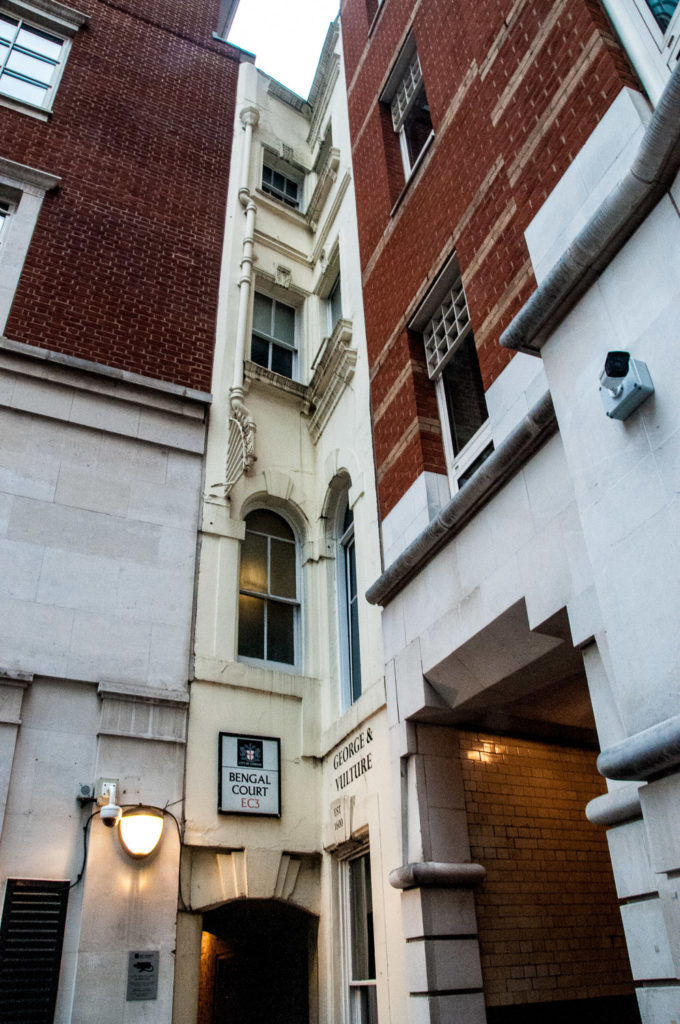
… and this splendid narrow alleyway.

Squeeze through and enjoy the feeling that you are back in the 17th century …
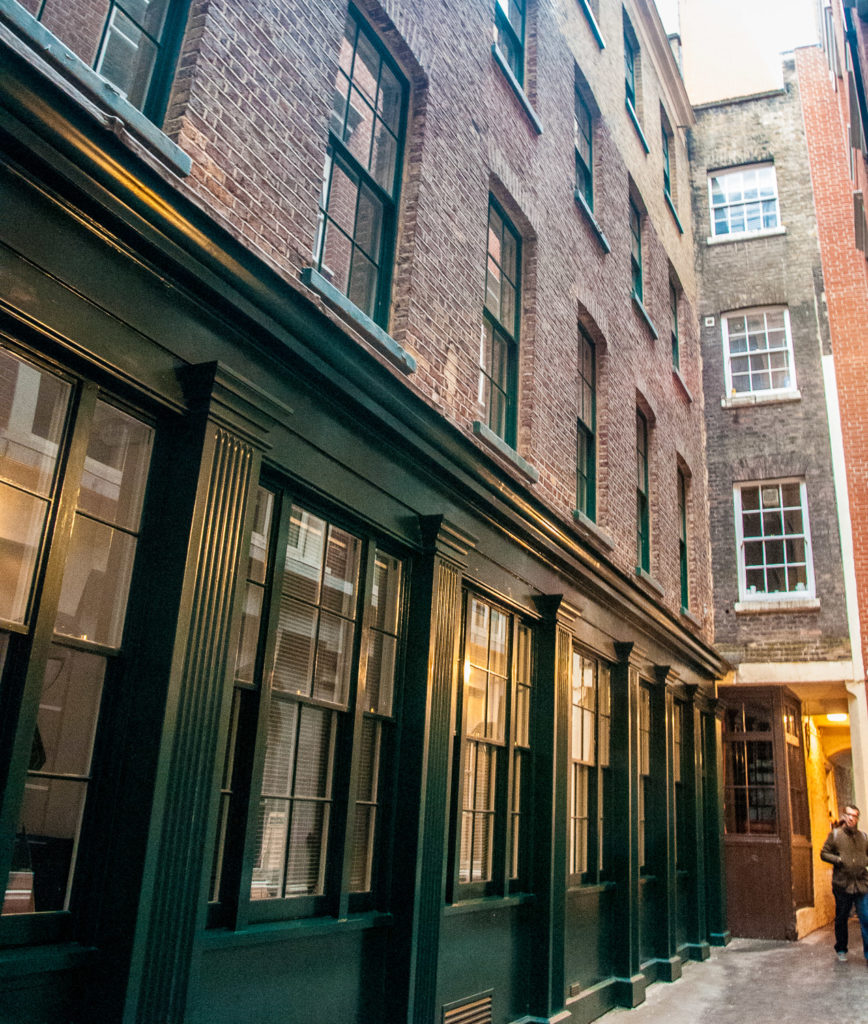
It was common at the turn of the 20th century for offices to have mirrors installed and hung outside to reflect light. I have come across this picture which is captioned Bengal Court 1910 …
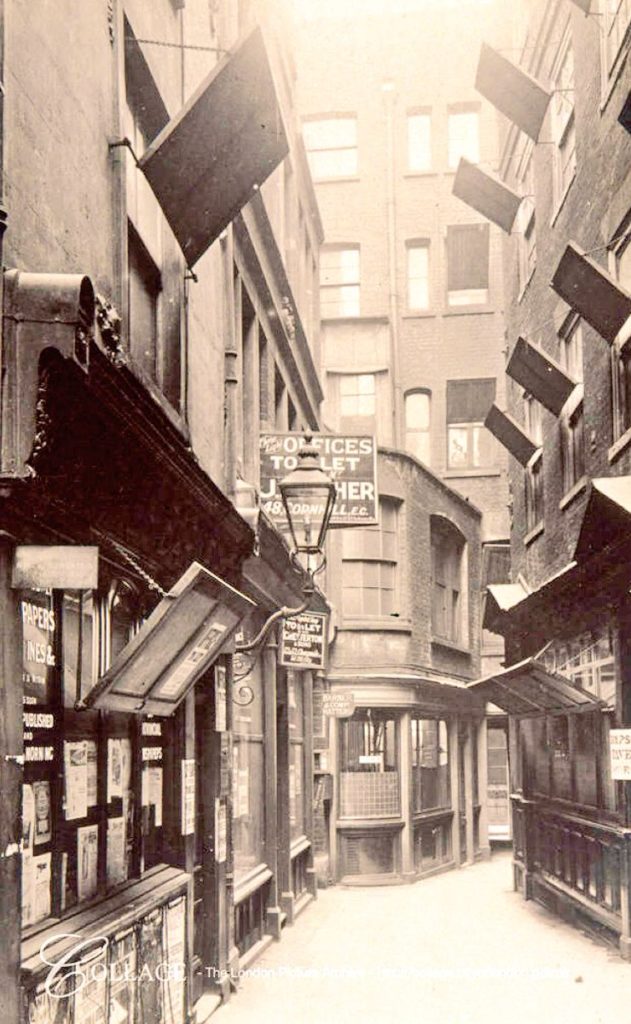
Make your way back to the front entrance of the George & Vulture …
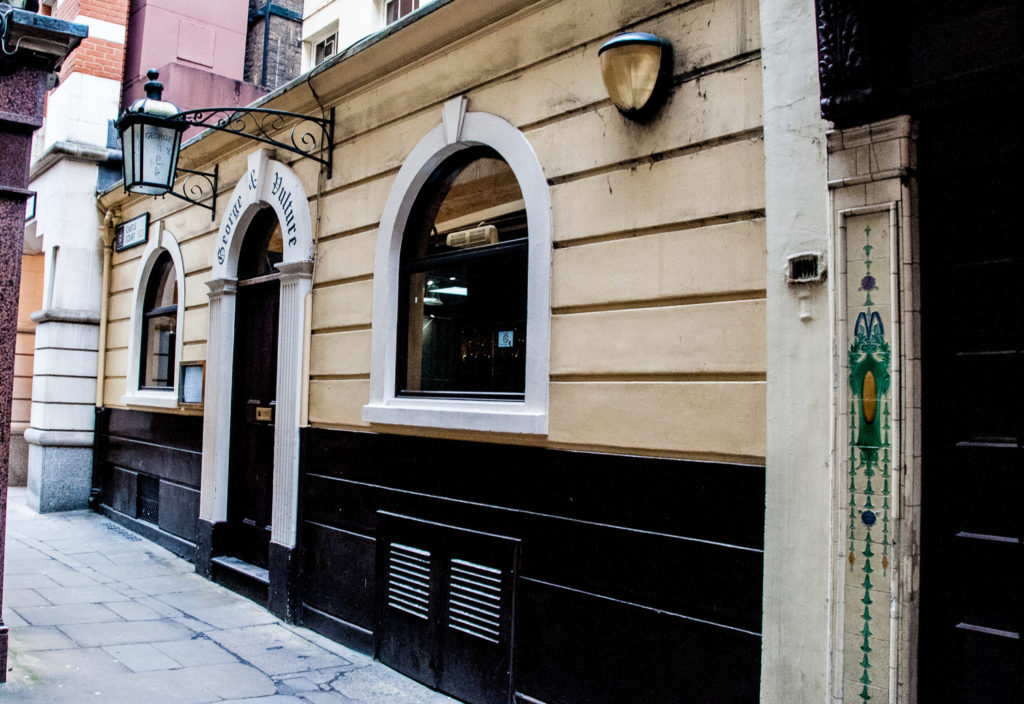
You will find a fascinating history of this great pub here.
Of course, I couldn’t resist taking a picture of these old tiles …

Simpson’s Tavern in Ball Court retains its character …
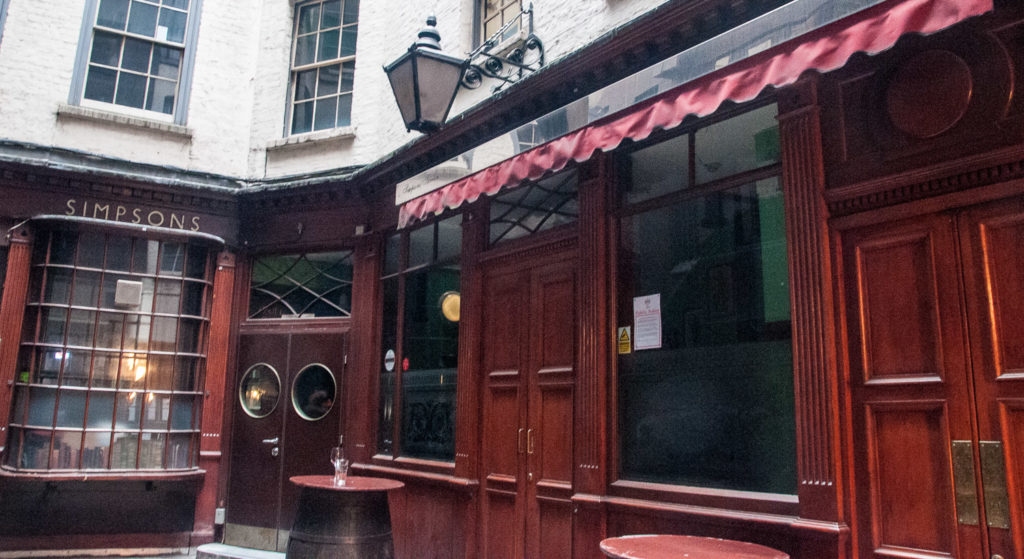
As does the Ball court entrance …
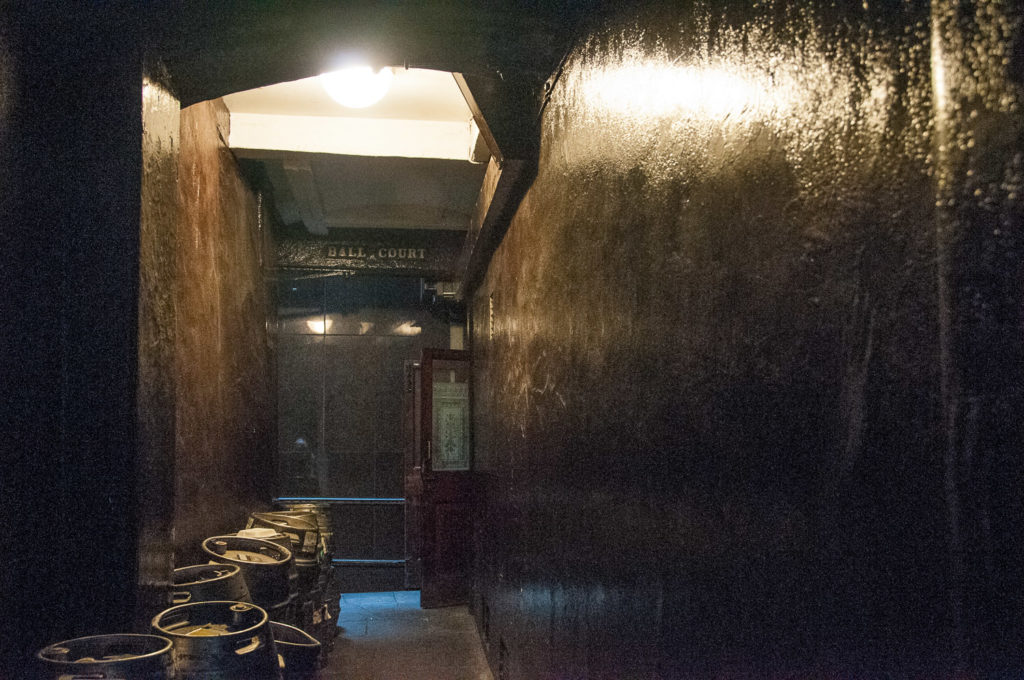
And finally, as I walked back down this alley towards Cheapside, I came across this old bank entrance …

… and, around the corner, these extra large iron-framed windows designed to catch the maximum amount of light for the benefit of the clerks beavering away inside …
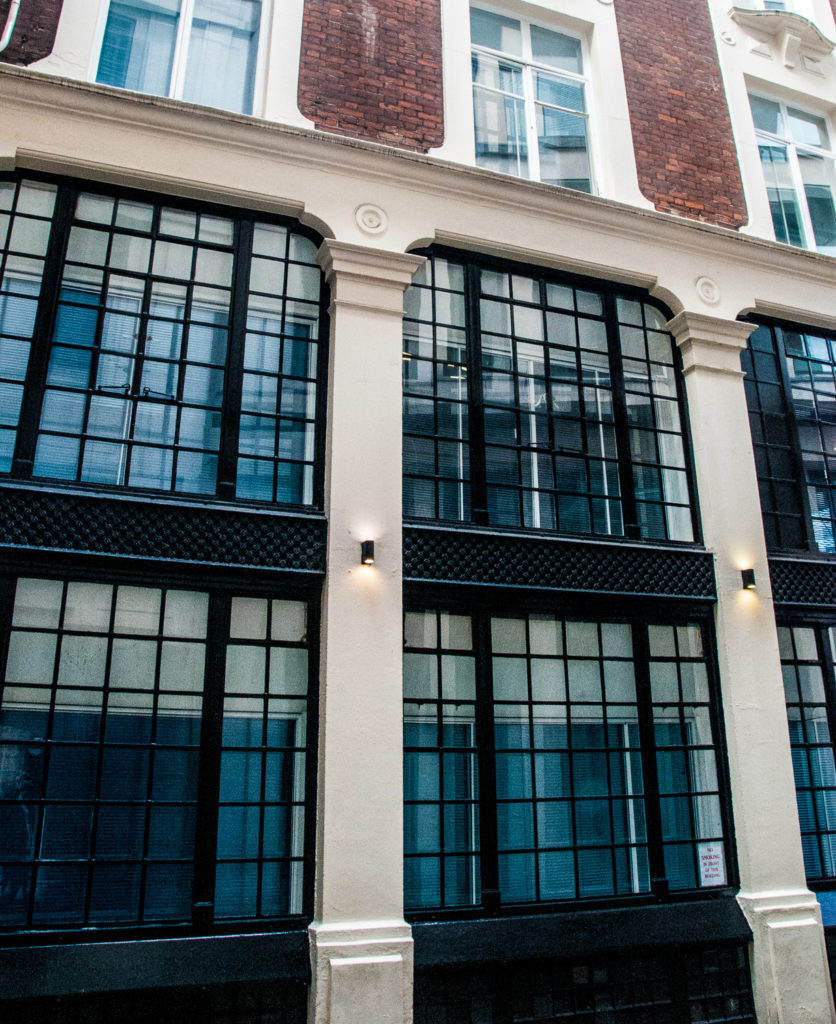
I am taking a break from alleys and courtyards now!
But I know I will be tempted back.




